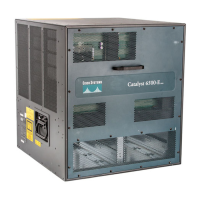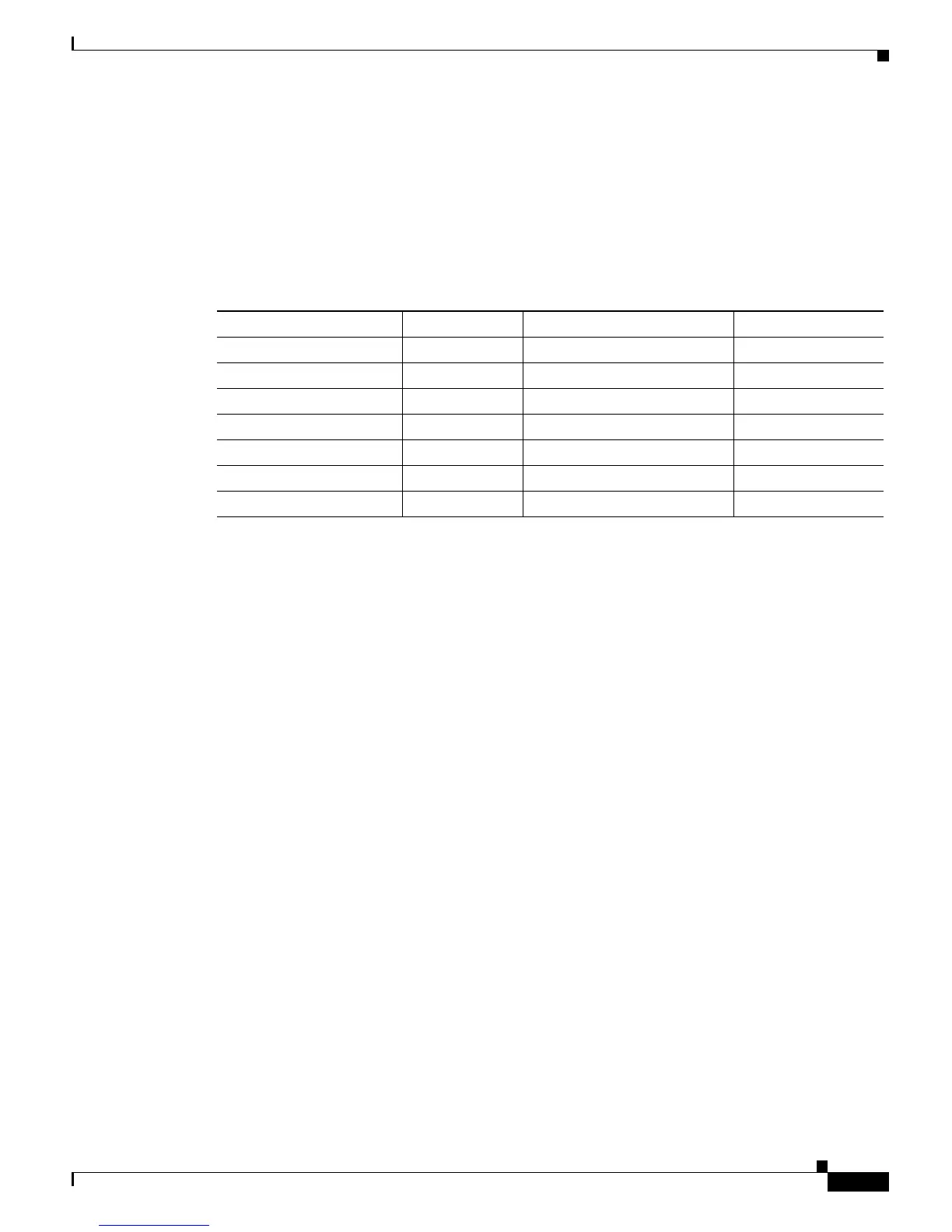52-43
Catalyst 6500 Series Switch Software Configuration Guide—Release 8.7
OL-8978-04
Chapter 52 Configuring QoS
Configuring QoS on the Switch
The policer_name parameter can be up to 31 characters, is case sensitive, and may include a–z, A–Z,
0–9, the dash character (-), the underscore character (_), and the period character (.).The policer names
must start with an alphabetic character (not a digit) and must be unique across all microflow and
aggregate policers. You cannot use the keywords from any command as a policer name.
The valid values for the rate and erate parameters are 32 Kbps (entered as 32) to 32 Gbps (entered as
32000000). To classify all traffic as out of profile, set the rate parameter to zero (0). Set the erate
parameter to a higher value than the rate parameter. PFC1 and PFC2 have the following hardware
granularity for rate values:
Within each range, QoS programs the hardware with the rate values that are multiples of the granularity
values.
The valid values for the burst and eburst parameters are 1 Kb (entered as 1) to 256 Mb (entered as
256000). When configuring the burst and eburst parameters, note the following:
• The burst keyword, the burst_value parameter, the optional eburst keyword, and the eburst_value
parameter set the token bucket sizes.
• The token bucket size defines the maximum number of the in-profile bytes that can be transmitted
every 0.25 millisecond.
• To sustain a specific rate, set the token bucket size to be at least the rate divided by 4000, because
the tokens are removed from the bucket every 1/4000th of a second (0.25 millisecond) and the bucket
needs to be at least as large as the burst size to sustain the specified rate.
• If you do not enter the eburst keyword and the eburst_value parameter, QoS sets both token buckets
to the size that is configured with the burst keyword and the burst_value parameter.
• Because any packet larger than the burst size is considered an out-of-profile packet, make sure that
the burst size is greater than or equal to the largest packet size being policed.
• QoS programs the hardware with the values that are multiples of 32K (32,768), not with the specific
value entered.
Enter either the drop keyword to cause all out-of-profile packets to be dropped or the policed-dscp
keyword to cause all out-of-profile packets with the normal rate to be marked down as specified in the
normal markdown DSCP map (for more information, see the “Mapping the DSCP Markdown Values”
section on page 52-75).
This example shows how to create a microflow policer with a 1-Mbps rate limit and a 10-Mb burst limit
that marks down out-of-profile traffic:
Console> (enable) set qos policer microflow my-micro rate 1000 burst 10000 policed-dscp
Hardware programming in progress...
QoS policer for microflow my-micro created successfully.
Console> (enable)
Rate Value Range Granularity Rate Value Range Granularity
1 to 1000 (1 Mbs) 32768 (32 K) 64001 to 128000 (128 Mbs) 4194304 (4 M)
1001 to 2000 (2 Mbs) 65536 (64 K) 128001 to 256000 (256 Mbs) 8388608 (8 M)
2001 to 4000 (4 Mbs) 131072 (128 K) 256001 to 512000 (512 Mbs) 16777216 (16 M)
4001 to 8000 (8 Mbs) 262144 (256 K) 512001 to 1024000 (1 Gps) 33554432 (32 M)
8001 to 16000 (16 Mbs) 524288 (512 K) 1024001 to 2048000 (2 Gps) 67108864 (64 M)
16001 to 32000 (32 Mbs) 1048576 (1 M) 2048001 to 4096000 (4 Gps) 134217728 (128 M)
32001 to 64000 (64 Mbs) 2097152 (2 M) 4096001 to 8192000 (8 Gps) 268435456 (256 M)

